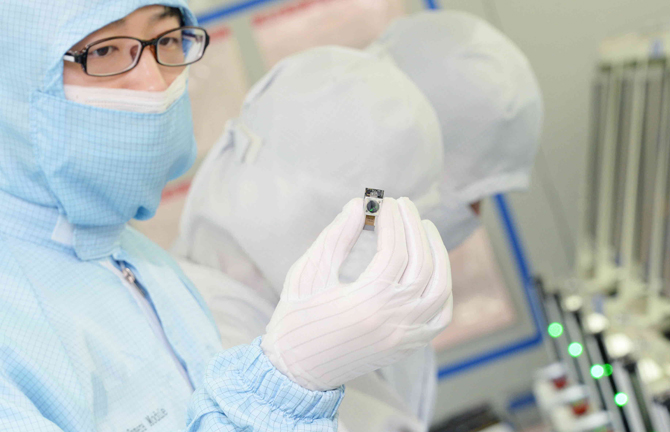LG Innotek (011070, CEO: Ung-Beom Lee), the world’s largest manufacturer of camera modules, passed the one billion unit sales threshold for its camera modules after 10 years of production. By the end of May, the number of sales reached approximately 1.04 billion units.
Since releasing their first camera module in 2005, the company achieved 500 million sales at the beginning of 2013, and added an additional 500 million sales in just 2 years.
Although these modules are small components, no more than 20 mm on the longest side, the distance would be 20,800 km if 1.04 billion modules were lined up, equivalent to the distance from Seoul to New York and back.
If 500,000 camera modules were loaded onto a 5-ton cargo truck, 2,080 trucks would need to mobilize to transport the total number of modules sold.
■ 660,000 units sold a day on average last year, annual sales revenue total $2.5 billion, ranked No. 1 globally for 4 years in a row
Last year alone, LG Innotek sold 240 million camera modules, or 660,000 units a day.
Last year, the company reached 2.5 billion US dollars in sales for camera modules alone and led the world’s camera module market. Since 2011, it has been No. 1 for 4 consecutive years. According to the market research firm, Research in China, LG Innotek claimed a 15.6% market share of the camera module market for mobile devices last year.
The 8-megapixel modules accounted for 81% of all LG Innotek modules in the first quarter, and the ultra high resolution 13 megapixels modules accounted for 8%.
LG Innotek produces camera modules at their Gwangju and Gumi plants in South Korea and their Yantai plant in China. They are operating to optimize the production line according to product specifications.
The key processes operate in a class 10 clean room that is on par with semiconductor production lines. A class 10 clean room means there are less than 10 dust particles, no larger than 0.0005 mm, per cubic foot of space (approx. 28,000㎤).
■ Taking a single step forward to lead change in response to market changes and customer needs
By stepping forward in response to market changes and customer needs, LG Innotek has led a decade of change for smartphone camera modules. It has been also been committed to acquiring core technologies in optics and precision mechanics.
In 2005, the company introduced the thinnest 2-megapixel camera module just one year after it entered this market. Thereafter, it introduced the 3-megapixel in 2007, 5-megapixel in 2008, 8-megapixel in 2009, and 13-megapixel in 2012, leading the trend in high resolution megapixels.
Moreover, LG Innotek changed market trends with differentiated functionality in products. In particular, it adopted advanced features like the Optical Image Stabilizer (OIS) so you can take sharp, clear pictures with your digital camera in various settings.
LG Innotek was the first Korean company to mass produce 13-megapixel OIS camera modules in 2013. The module was applied to the LG G2 smartphone. The 13-megapixel OIS Plus, a new model released in 2014, was embedded in the LG G3.
This year, the 16-megapixel OIS 2.0 module with upgraded aperture settings, pixels and OIS was adopted for LG’s strategic smartphone, the G4. In early April 2015, LG Innotek successfully mass produced both the OIS 2.0 and the 8-megapixel front camera modules, demonstrating its competitive business edge.
LG Innotek is leveraging its technology in smartphone camera modules to expand into automotive applications and other areas. “Consumer value is our highest priority throughout the entire process, including the development, production and distribution stages of our process,” said Hyeong-cheol Mun, Managing Director of the Optical Solutions Business Unit. “We will provide convenient and enjoyable user experiences with integrated innovative technologies,” he added.

Image Description


Photo 1/2) An LG Innotek employee observes the high resolution modules for the LG G4 smartphone on the production line. Ten years after releasing their first camera module, LG Innotek’s cumulative sales reach 1.04 billion units.










